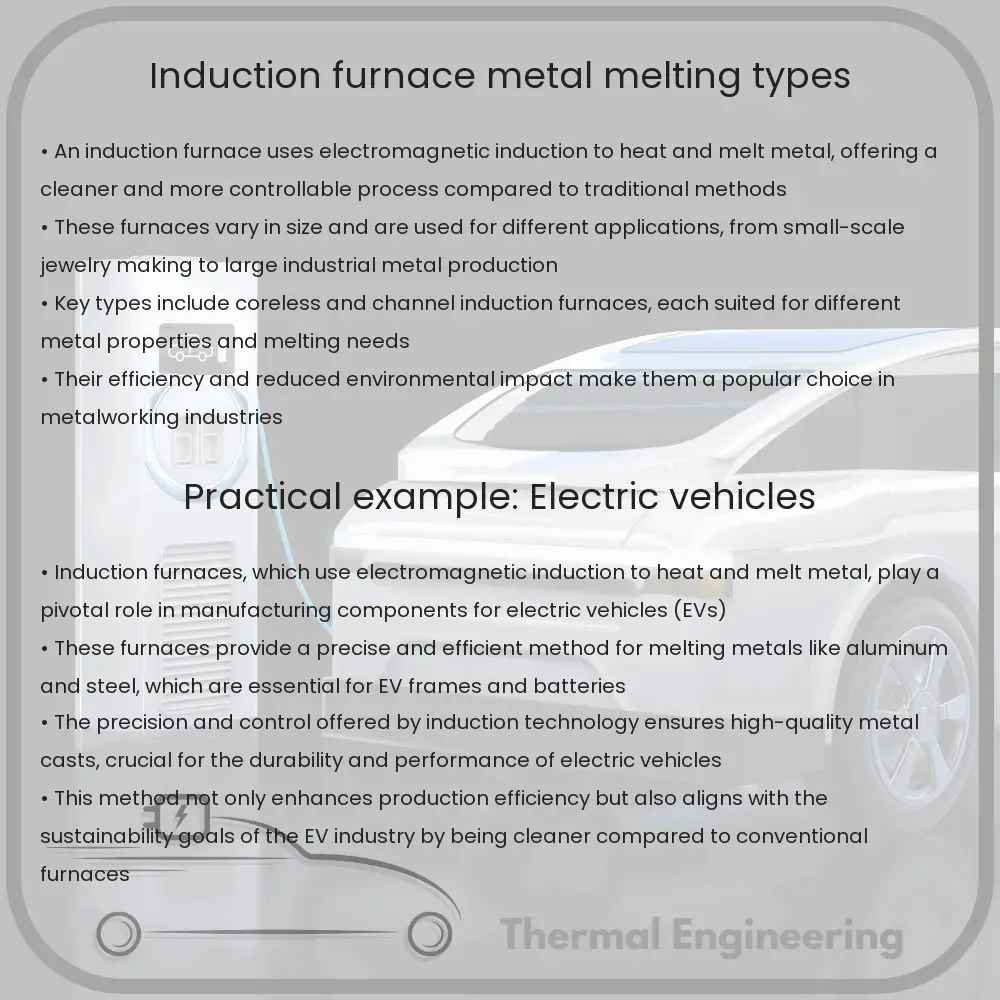Learn how induction furnaces use electromagnetic induction for energy-efficient metal melting across various industrial applications.

Understanding Induction Furnaces: Metal Melting & Types
An induction furnace is a type of electric furnace used for melting metal. This device is essential in foundries and metalworking plants, offering a clean, energy-efficient, and controllable melting process. Unlike traditional furnaces, induction furnaces do not use combustion to heat metal; instead, they use electromagnetic induction to produce heat.
How Induction Furnaces Work
Induction heating relies on the basic principles of electromagnetic induction. An induction furnace typically consists of a coil of copper wire, an electric power supply, and a metal charge to be melted. When an alternating current (AC) flows through the coil, it creates a rapidly reversing magnetic field. This magnetic field penetrates the metal charge, generating electrical currents within the metal itself. These currents, known as eddy currents, produce localized heating that melts the metal.
The efficiency of melting in an induction furnace is significantly high because the heat is generated directly in the metal charge as opposed to being transferred from another source. This direct heating method allows for rapid melting and reduces energy loss.
Types of Induction Furnaces
Induction furnaces are categorized based on the type of frequency of the current used, which affects their heating behavior and the applications they are best suited for:
- High-Frequency Induction Furnaces: These furnaces operate with frequencies ranging from 10 kHz to 1 MHz, making them suitable for the melting of small batches of metals or precious metals like gold and silver. They are highly precise in their heating.
- Medium-Frequency Induction Furnaces: These are typically used in foundries for melting large quantities of iron, steel, and non-ferrous metals. They operate at frequencies between 150 Hz to 10 kHz.
- Low-Frequency Induction Furnaces: Operating at frequencies below 50 Hz, these furnaces are used for large scale iron melting due to deeper electromagnetic penetration which is ideal for larger volumes.
Advantages of Induction Furnaces
- Energy Efficiency: These furnaces convert up to 90% of the energy consumed into useful heat. Conventional furnaces generally achieve only 50-60% energy efficiency.
- Improved Metal Quality: Induction heating provides uniform temperature distribution and precise control over the melting process, which helps in reducing impurities and producing higher quality metal.
- Reduced Pollution: Since induction furnaces use electricity and do not burn fossil fuels, they emit fewer pollutants compared to traditional melting furnaces.
- Operational Flexibility: They can be started and stopped quickly, making them ideal for foundries that operate on a batch basis or require frequent alloy changes.
Applications of Induction Furnaces
Induction furnaces are versatile tools used in various applications across the metalworking industry. They are commonly used for:
- Melting ferrous and non-ferrous metals for casting
- Alloy production and mixing
- Production of high-quality castings used in automotive and aerospace industries
- Precious metal processing and refining
In conclusion, induction furnaces represent a crucial technology in modern metallurgy, offering efficient, clean, and controllable metal melting capabilities. As energy costs continue to rise and environmental regulations become more stringent, the role of induction furnaces is likely to grow, helping industries achieve higher productivity and sustainability standards.